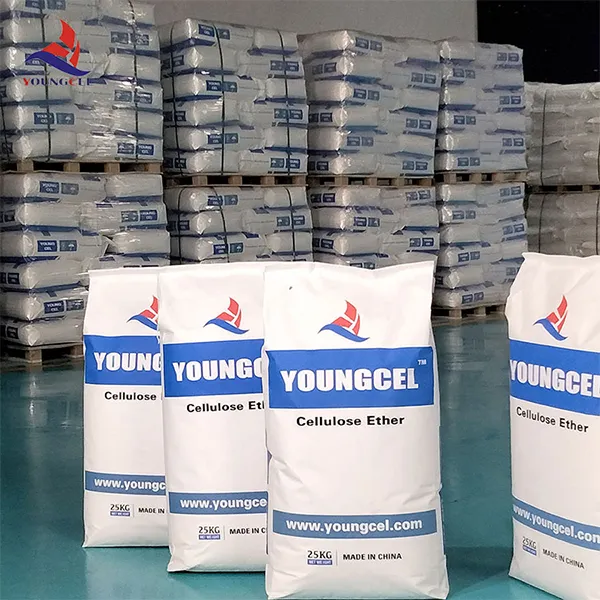HPMC for Industrial Applications A Versatile Solution
Hydroxypropyl methylcellulose (HPMC) is a cellulose ether that has garnered significant attention in various industrial applications due to its unique properties. As a non-ionic polymer derived from natural cellulose, HPMC offers a range of characteristics that make it ideal for use in sectors such as construction, pharmaceuticals, food, and coatings, among others. This article delves into the properties, benefits, and industrial applications of HPMC, highlighting its versatility and value.
Properties of HPMC
HPMC is particularly valued for its exceptional hydrophilicity, which enables it to dissolve readily in water, forming a clear, viscous solution. This feature is critical in applications where thickening agents or binding agents are required. Additionally, HPMC is characterized by its thermal stability, excellent water retention capabilities, and ability to form films. These properties make it suitable for modifying the texture, consistency, and behavior of various formulations in different industries.
Another notable attribute of HPMC is its gel-forming ability at elevated temperatures. This property is particularly beneficial in creating stable emulsions and suspensions. Furthermore, HPMC is non-toxic and odorless, making it a safe choice for use in food and pharmaceutical applications, where product safety is paramount.
Benefits of HPMC in Industrial Applications
The multifunctionality of HPMC allows it to serve various roles across different industrial processes. In the construction sector, for example, HPMC is widely employed as a thickening agent, water retention aid, and binder in cement, plaster, and tile adhesives. Its ability to improve workability, extend open time, and enhance adhesion performance is crucial for ensuring the durability and quality of building materials.
In the pharmaceutical industry, HPMC has gained recognition as an excipient in oral solid dosage forms, such as tablets and capsules. It serves not only as a binder but also as a controlled-release agent that regulates the release profile of active pharmaceutical ingredients (APIs). This function is especially important in developing formulations that require precise drug delivery over extended periods.
Moreover, HPMC is utilized in the food industry as a food additive and thickener. Its ability to improve texture and mouthfeel is widely recognized, and it is included in various food products like sauces, dressings, and baked goods. The safety and regulatory acceptance of HPMC in food applications contribute to its popularity among manufacturers seeking clean-label options.
hpmc for industrial

Industrial Applications of HPMC
HPMC finds numerous applications across various industries
1. Construction In construction materials such as mortar, stucco, and tile adhesives, HPMC enhances workability and adhesion, ensuring that the mixtures remain workable for extended periods.
2. Pharmaceuticals HPMC is used in the production of controlled-release tablets, where it modulates the release rates of the API. Additionally, its film-forming properties make it suitable for coating pills, enhancing their stability and patient compliance.
3. Food Production HPMC functions as a thickener and stabilizer in various food products. It maintains texture and consistency in sauces, ice creams, and other processed foods while also enhancing the shelf life of these products.
4. Personal Care Products In cosmetics and personal care items, HPMC is used as a binder and thickening agent, enhancing the stability and aesthetic appeal of lotions, gels, and creams.
5. Coatings HPMC is utilized in the formulation of paints and coatings as a rheological modifier, helping to improve viscosity and application properties while ensuring a uniform finish.
Conclusion
Hydroxypropyl methylcellulose (HPMC) is a versatile and essential component across numerous industrial applications. Its unique blend of properties—such as excellent water retention, film-forming capabilities, and non-toxic nature—positions it as a crucial ingredient in construction, pharmaceuticals, food production, and more. As industries continue to evolve and seek innovative solutions to meet market demands, the relevance of HPMC will likely increase, driving further research and development towards discovering its full potential in current and emerging applications. The ongoing exploration of HPMC's capabilities promises to enhance product quality and functionality across a diverse range of sectors, making it a cornerstone component in the industrial landscape.
-
Rdp Powder: Key Considerations for Wholesalers in the Building Materials IndustryNewsJul.08,2025
-
Key Considerations for Wholesalers: Navigating the World of Hpmc - Based ProductsNewsJul.08,2025
-
Hpmc Detergent: Key Considerations for WholesalersNewsJul.08,2025
-
Key Considerations for Wholesalers: China Hpmc For Tile Adhesive, Coating Additives, Concrete Additives, and MoreNewsJul.08,2025
-
Crucial Considerations for Wholesalers: Navigating the World of Construction MaterialsNewsJul.08,2025
-
Key Considerations for Wholesalers Sourcing Additive For Cement, Additive For Concrete, Additive For Putty from Additive Manufacturer Shijiazhuang Gaocheng District Yongfeng Cellulose Co., Ltd.NewsJul.08,2025




